Explore Daniel Bell's 1808 Painting of the Framingham Centre Common.
Click on figures and buildings in the image below to learn more about the people and places that made early 1800s Framingham a boom town!
View of the Centre Common of Framingham by Daniel Bell
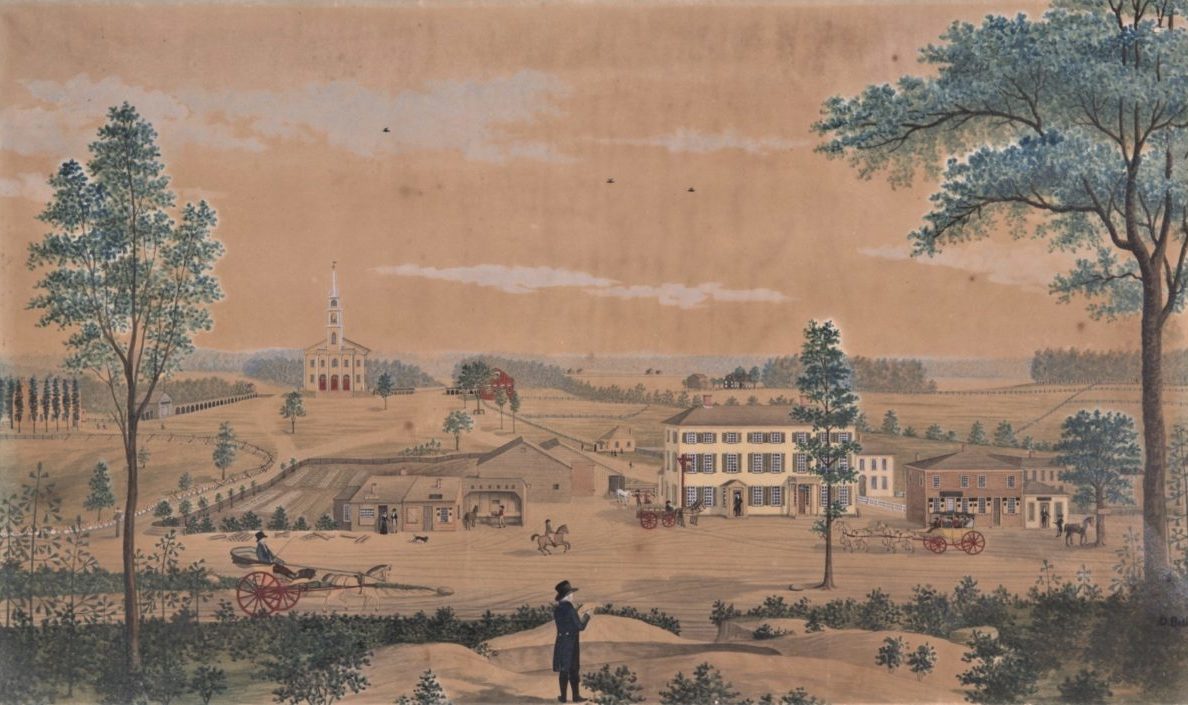
Captain Daniel Bell
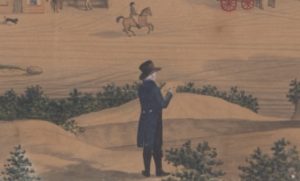
The artist, Captain Daniel Bell, stands in the foreground of his own work. He is depicted sketching on Bare Hill, the future site of Framingham State University, looking North over the common. Captain Bell was an artist and officer in the U.S. Army originally from New York state. He married Nancy Buckminster of Framingham in 1801, and settled with her there.
First Parish Church
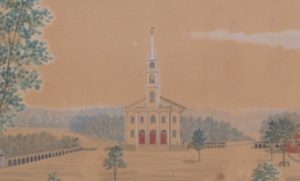
For the town’s first 100 years, the church in Framingham was also the location of Town Meeting and other governmental affairs, but the two were separated in 1808, the same year Daniel Bell painted the Common. The building depicted here was the third to house the town’s congregation. It was built in 1807 to replace an outdated, barn-like meetinghouse that had stood in roughly the same spot. This building would be replaced with a Gothic Revival Structure in 1847, which burned down in 1926, and was replaced with the current First Parish Church building.
Abner Wheeler’s Tavern
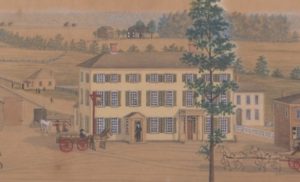
Abner Wheeler came to Framingham from Lincoln in 1798, to lease Framingham Centre’s first freestanding store, “The Little Red Store.” Wheeler was soon the biggest name in Framingham Centre. Within two years, Abner purchased the store and the combination hotel and tavern next door, while his brother Benjamin established another store directly adjacent to the hotel. A third brother, Eliphalet, would join them in Framingham in 1816. Abner can be seen here standing in the doorway of his hotel, which has the sign of the coffee grinder.
Larabee’s Shoe Shop
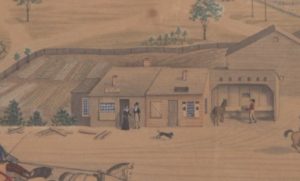
The shop of shoemaker William Larabee. Miss Sally Larabee, the proprietor’s daughter, is seen speaking with William Buckminster, Captain Bell’s brother-in-law, whom she would go on to marry. Buckminster was a journalist and visionary agriculturalist who was considered “one of the foremost farmers of the state, and an acknowledged leader in agricultural progress.”
Dr. John B. Kittredge
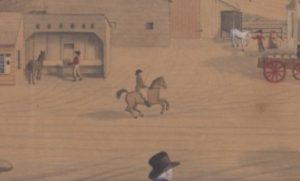
John B. Kittredge was one of the first doctors with an MD degree in Framingham, opening his practice in 1791. His reputation was so great that patients traveled from as far afield as New Hampshire to seek his services. Unfortunately, it was one such patient that brought Smallpox into Framingham. Seventeen Framingham residents were affected, and five eventually died. Despite his connection with the outbreak, Kittredge remained a popular and respected figure in town and practiced medicine until his death in 1848.
Colonel David Brewer
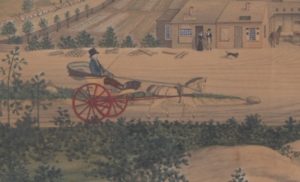
Brewer was the son of another Colonel David Brewer, who led one of the Massachusetts regiments in the Revolutionary war. Colonel Brewer, Jr. was a colonel in the local militia and a town selectman. Brewer lived in Salem End, on the Peter Clayes property, famous as the Framingham homestead of the Clayes family, who were driven out of Salem during the Witch hysteria of the 1690s.
The New Town House
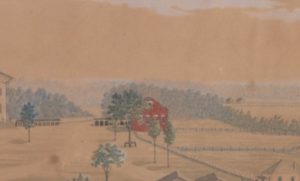
This Town House was built in 1808, the year Daniel Bell executed this painting of the Common. For 100 years, all official Town affairs were conducted in the church. This building was the first step in disengaging governmental affairs from the church. Town Meeting’s tenure at this building would be relatively short lived, as the Village Hall would be built to replace it on the southern end of the Common in 1834, where it still stands today.
District School
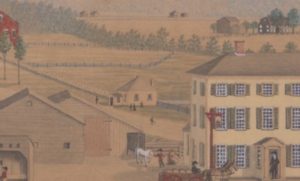
Around the time the Centre Common was developed, Framingham was reforming its public school system. Between 1792 and 1818, all public schools in town were rebuilt in brick, modeled after the acclaimed Framingham Academy, which sat on the Centre Common opposite this little brick school house.
Benjamin Wheeler’s Store
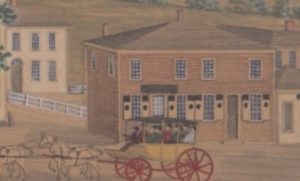
Benjamin Wheeler joined his brother Abner in Framingham shortly after Abner acquired the hotel on the Worcester Turnpike. In 1804, he built a store adjacent to his brother’s hotel. Although the store no longer survives, the granite front step now stands on the lawn outside the Old Academy building.
The Worcester Turnpike
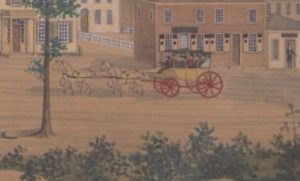
In 1805, a committee of men from Worcester petitioned the state of Massachusetts to build a turnpike connecting the interior city to the ports of Boston. The Wheeler brothers, Abner and Benjamin, were major proponents of the turnpike, which would pass right by their businesses in Framingham Centre. After the Turnpike was established, as many as 17 stage coaches per day would stop by Framingham Centre, which was the halfway point between Boston and Worcester.
Reverend David Kellogg’s House
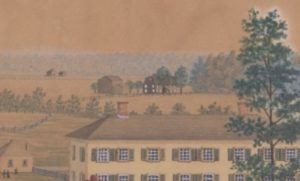
The only building represented in Bell’s painting that’s still standing is the home of the Reverend David Kellogg, who came to Framingham in 1778 to serve as the new minister of the First Parish. Kellogg was a highly educated man who would preach to three generations of Framingham congregants over the course of his 60+ years in the pulpit.
Framingham Academy
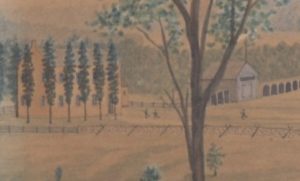
Established in 1792 as a part of the American movement for liberal education, Framingham Academy was a private institution that taught its students “modern” subjects such as science and mathematics. The school welcomed both male and female students “upon equal terms” and was the starting point for many of Framingham’s most prominent citizens. Before the old stone Academy building that stands on the Centre Common today, Framingham Academy was housed in the brick building shown here.